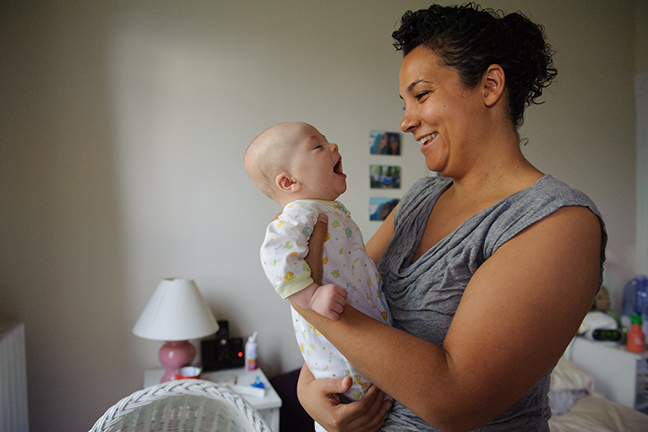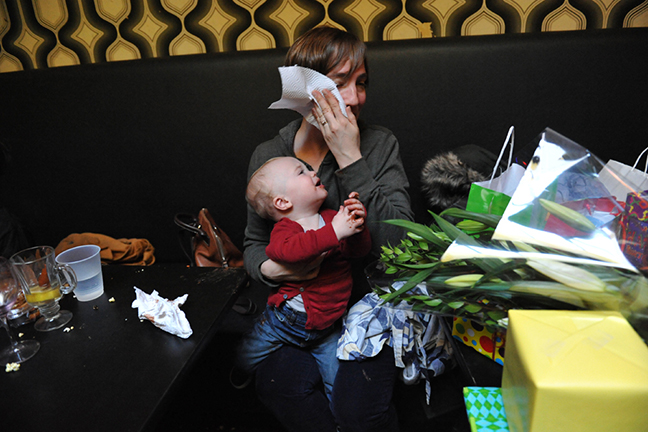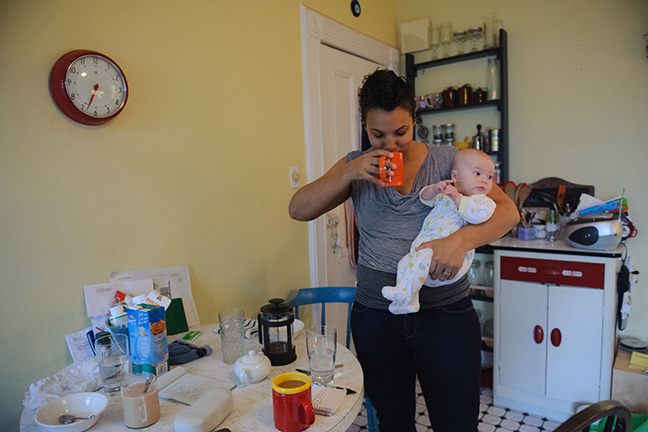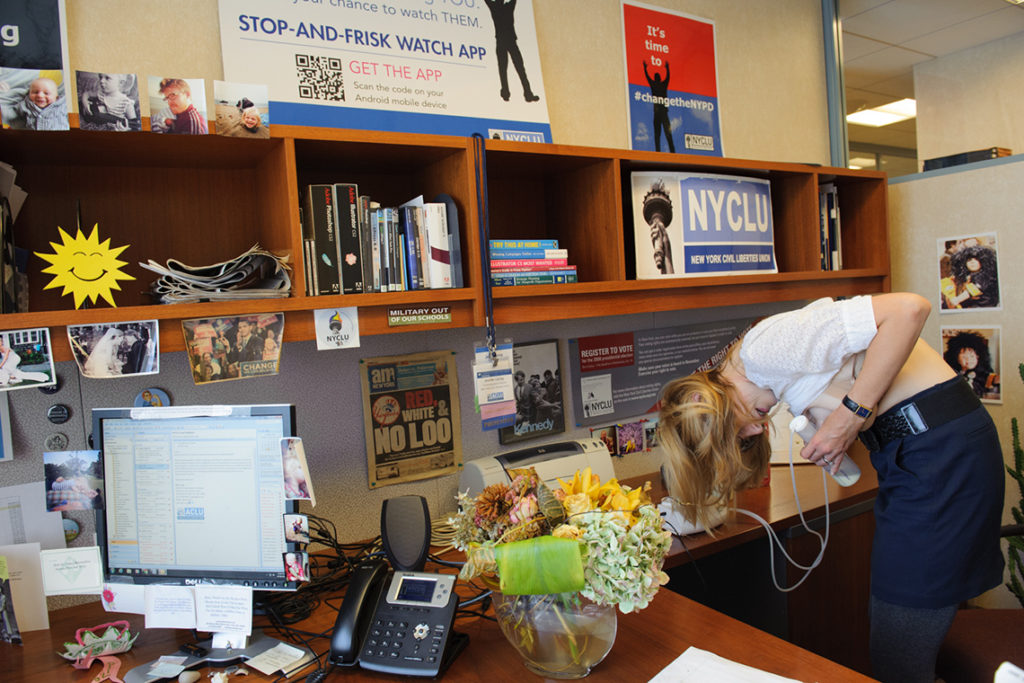
Life Plus Baby, In Photos
Motherhood is hard. Under the least complicated circumstances, it’s both physically and emotionally taxing, and requires levels of resourcefulness and personal resilience otherwise unknown in human experience. When motherhood happens in the course of a career, women and their families must go to extraordinary lengths to accommodate and adapt.
The mothers in these photographs love their children and their work and derive fulfillment from each. When these photos were taken, mostly in 2013 and 2014, each had recently given birth; now those children are school-age. Time has brought change to each of their families, and required sacrifices both personal and professional. For the photographer—a working mother herself—these photos are an attempt to understand the merging of two separate identities into a singular, cohesive whole.
–Jillian Goodman
Jen Carnig
For eight years, Carnig served as communications director for the New York Civil Liberties Union (NYCLU), the New York State affiliate of the ACLU. Those years also encompassed the births of her two children. When her first, Olive, was born, the NYCLU did not have a paid-family-leave policy; using sick leave, vacation days, and state disability funding, Carnig was able to spend three months at home, although not without dipping into the family’s savings. By the time she gave birth to her second, Wiley, the NYCLU had adopted a policy of six weeks paid leave, and by again saving up sick days and vacation days, she was able to stretch that to twelve. Today, Wiley is in full-time day care and Olive is in kindergarten. Carnig now works at a PR firm that advises nonprofits and offers her the workday flexibility she needs to be able to pick up her daughter at the end of the school day. “I know how lucky I am, but it’s hard,” Carnig says. “It’s much tougher having two in the city, but you just make it work. It just works.”
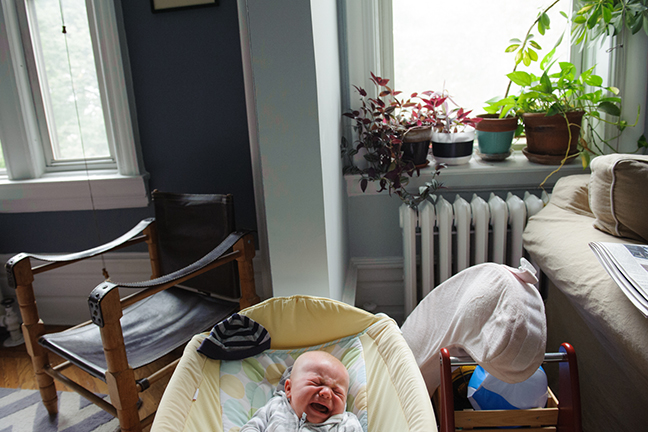
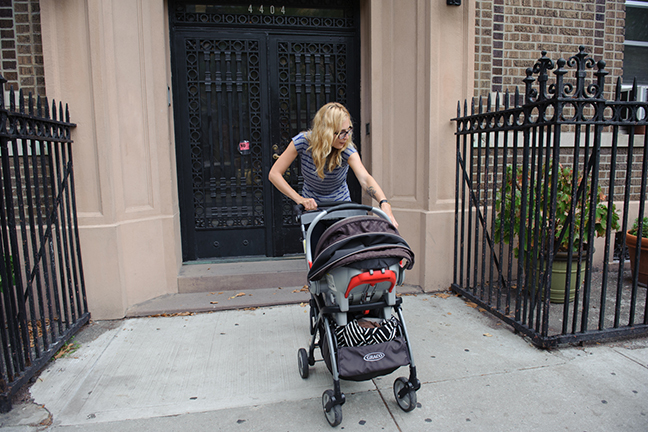
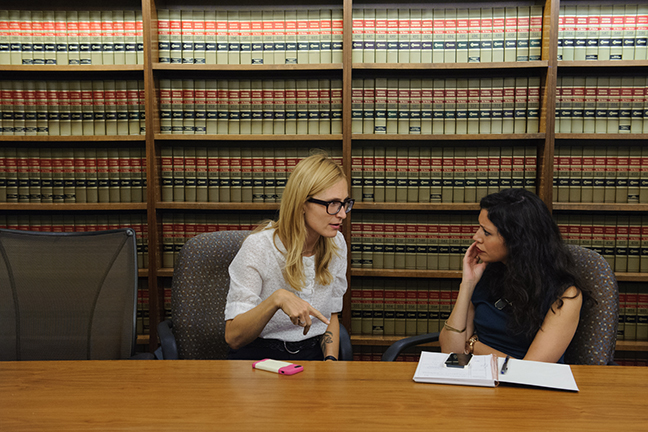 Top: Carnig pumps breast milk at the office after the birth of her second child.
Top: Carnig pumps breast milk at the office after the birth of her second child.
1. Carnig’s son, Wiley, approximately three months after he was born.
2. Carnig and Wiley leave the apartment together during Carnig’s maternity leave.
3. Carnig returned to the NYCLU on a part-time basis at first, going back to full time after two months.
Petrushka Bazin Larsen
Ila, Larsen’s first daughter, is now al most four years old. When she was born, Larsen was the program director of a small arts nonprofit called the Laundromat Project, with offices just eight blocks from her apartment. A year ago, however, Larsen became the vice president of programs and education at the Brooklyn Children’s Museum, a vertical move for her career but one that meant she had even less time to spend at home. The change was hard on Ila. “It’s not like I never worked,” Larsen says. “It’s not like I’m just going back to work from not working at all. But the way that she responded was as though that were the case. So that’s hard.” Larsen’s mother worked as well, and when Larsen was Ila’s age, she recalls, she saw her mother only on week ends. This spring, Larsen gave birth to a second daughter, named Zadie. “I am affirmed and encouraged by the statistics that working moms yield high-achieving daughters,” Larsen says. “I try to hold on to that little fact.”
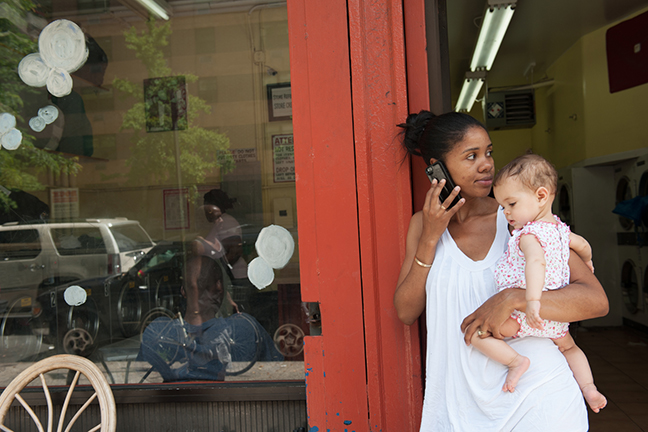
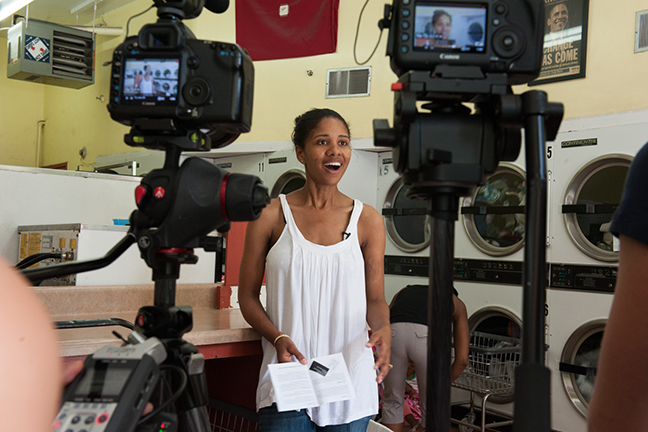
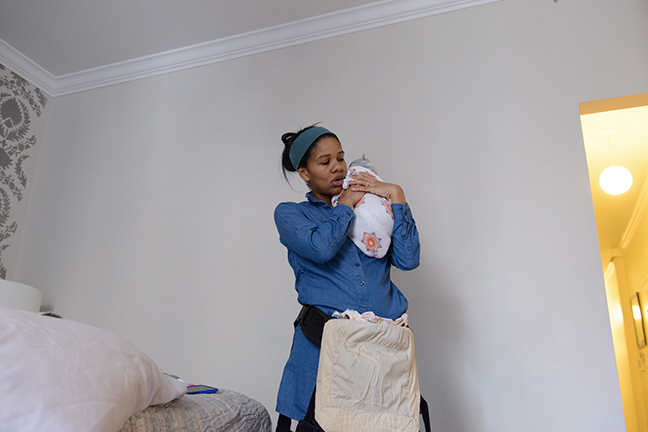
1. Larsen waits for her husband to pick up Ila.
2. Larsen shoots a video for the Laundromat Project, a nonprofit that brings arts programming into children’s everyday lives.
3. Larsen and Zadie, approximately one month after Zadie was born.
Kamdyn Moore and Tomara Aldrich
Moore and Aldrich decided early in their relationship that they wanted children. Although they each wanted to carry, they decided that Aldrich would go first, and with the help of a close mutual friend, she became pregnant with their first child, Spencer. At the time, Aldrich was working in the administration of Barnard College, which offered no paid maternity leave. After eleven weeks, financial concerns forced her to go back full time. “I was not physically or emotionally or mentally ready to go back,” she says. Aldrich has a seizure disorder, and the strain of returning to work put her in the hospital for an additional week’s worth of unpaid time. Aldrich now works at Columbia University, which offers pregnancy-related paid medical leave of up to six months; Moore’s employer, Smart Design, recently extended its paid leave period from six to twelve weeks. They’ve begun talking about having a second child, which Moore will carry. “We both work a lot and are really committed to our jobs,” Moore says. “And we’re both really committed to parenting and raising an awesome kid and growing our family. I feel very proud of that.”
